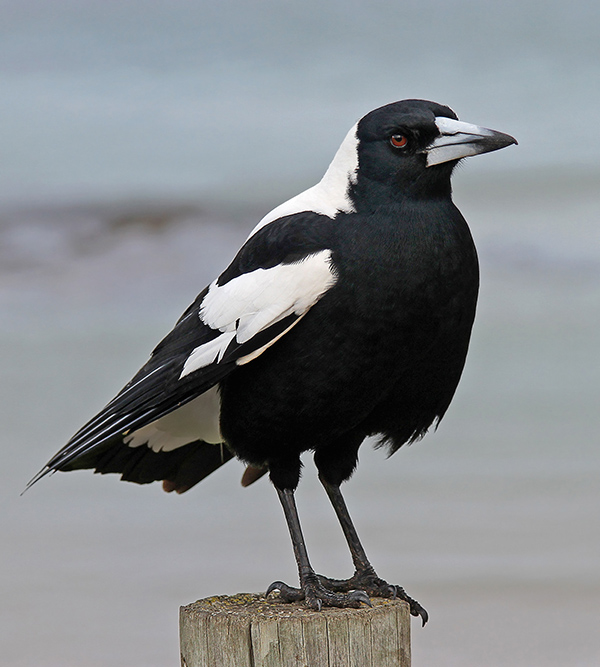Australian magpie
Where is it found?
Introduced in the late 1800s to control insect pests, the Australian magpie is found on or over all non-forested habitats from coastal waters to high-country farms in the North Island. In the South Island, it is most common from Kaikoura to Southland. It is uncommon in Nelson and inland Marlborough, and is largely absent from Westland, except for the area between Harihari and Westport.
Is it really a problem?
Often blamed for the predation of native birds and their nests, however, the evidence is anecdotal. There is at least one instance where they have been recorded taking newly-hatched banded dotterel chicks from a nest. However, this appears to have been opportunistic. This raises the same issues mentioned in the predator’s overview page; some predators predate on more troubling predators such as rats. Magpies may play a very minor to insignificant role in threatening braided river birds, and in some locations may, in fact, be beneficial. To date, there has been virtually no research on this subject.
They are only included here as they are a known top predator.

Description
There are three subspecies of the Australian magpie (Gymnorhina tibicen), the black-backed, and two white-backed forms, with white-backed birds predominating in most parts of New Zealand. Magpies are most abundant on farmland with shelter belts of pines, macrocarpas and gums. Similar in size to a crow (not the much larger raven), they average 41cm and weigh 350g.
The white-backed form tyrannica is the largest of the sub-species. The male has a white hind-neck, mantle, rump and shoulder patches. The upper two-thirds of the tail and under-tail coverts are also white. The rest of the plumage is black, with a blue iridescence. The female is similar, but the mantle is grey, and the black parts of the plumage are less iridescent. Both sexes have a blue-grey bill with a dark tip and red eyes. The black-backed magpie is similar to the white-backed forms, but with a black mantle. The female can be identified by the presence of some grey on the lower hind-neck. The two subspecies interbreed, resulting in offspring with a varying amount of black on the mantle, ranging from a few feathers to a narrow band. Both sexes have a distinctive carolling song.
They are highly intelligent and can live up to 40 years. If attacked by people especially when nesting, they will \’remember\’ this and in turn, swoop on people when re-nesting the following season. They will continue this behaviour their entire lives.
